Retro Replay Review
Gameplay
Madō Monogatari: Hanamaru Daiyōchienji leans heavily into classic Japanese-style RPG mechanics, delivering a blend of exploration, puzzle-solving, and turn-based combat. You assume the role of five-year-old Arle Nadja as she embarks on her Final Exam in a magical kindergarten, embarking on a quest to locate eight scattered gems for a wish-granting ritual at Wizard Mountain. The world unfolds through interconnected rooms, secret passages, and interactive NPCs, inviting players to experiment with different spells to overcome environmental obstacles and unlock hidden pathways.
Combat is driven entirely by magic; Arle cannot perform physical attacks, so mastering her spellbook is essential. Random encounters trigger a side-view battle screen where Arle appears on the left and her whimsical foes on the right. With no visible health bars or numerical indicators for hit points, battles hinge on intuition, timing, and pattern recognition—forcing you to learn enemy behaviors and adjust your strategy on the fly.
Spell progression offers a satisfying sense of growth: modest blasts of fire and ice evolve into more extravagant elemental attacks, while status-inflicting charms and utility spells broaden your tactical options. Although the RNG nature of encounters can occasionally feel punishing, the game balances grind with opportunities to discover hidden items and shortcuts around the map. Overall, the gameplay loop fosters a rewarding mix of trial-and-error experimentation and steady magical empowerment.
Graphics
Graphically, Hanamaru Daiyōchienji embraces charming, sprite-based visuals that highlight its whimsical kindergarten setting. Arle’s character sprite is adorably animated, with expressive gestures that change based on her current spell or emotional reaction. Backgrounds range from sunlit classrooms and flower-strewn gardens to dimly lit dungeons, each rendered in a vibrant palette that recalls early-’90s console RPGs.
Enemy designs strike a balance between cute and quirky, featuring talking vegetables, mischievous ghosts, and anthropomorphic creatures that feel at home in a child’s storybook. Battle animations are concise but impactful: spells swirl in colorful arcs, elemental effects flash crisply, and the occasional comical defeat pose keeps the tone light. While the resolution and color depth are modest by modern standards, the art direction’s consistency and attention to detail ensure the world remains engaging and easy to navigate.
Menus and user interfaces follow a straightforward, retro aesthetic. Spell lists, item inventories, and status screens rely on clear iconography, making it simple to track your growing arsenal of magic. Though lacking in dynamic camera movement or advanced lighting effects, the visuals serve the game’s playful spirit, ensuring legibility during dungeon dives and a nostalgic charm that longtime fans of the genre will appreciate.
Story
The narrative of Madō Monogatari: Hanamaru Daiyōchienji unfolds at the intersection of whimsy and ambition. Arle Nadja is a precocious apprentice magician, preparing for her kindergarten’s Final Exam. When a mysterious letter promises that collecting eight magical gems will grant a single wish at Wizard Mountain, Arle seizes the opportunity to prove her talent—and fulfill her heart’s desire.
Story sequences are woven into exploration and battles, with NPCs sharing tidbits about the world and providing clues to gem locations. From cheerful classmates to enigmatic guardians of hidden shrines, each character adds color to Arle’s journey. Dialogue often leans into puns and magical lore, offering a lighthearted tone that balances well against the occasional challenging encounter.
Although the overarching quest is straightforward, the pacing remains engaging thanks to intermittent reveals: a cryptic prophecy here, a surprising ally there. Fan service abounds for players familiar with the Puyo Puyo saga, as cameos and references link Arle’s kindergarten adventure to the wider magical universe. Newcomers, meanwhile, can appreciate a self-contained storyline that gradually escalates in urgency and depth.
Overall Experience
Madō Monogatari: Hanamaru Daiyōchienji provides a refreshing spin on the RPG formula by centering on a young heroine in a fantastical educational setting. The absence of traditional physical attacks and health bars creates a unique challenge that rewards observation and adaptability. By leaning into spellcasting as your sole means of offense, the game cultivates a strong sense of identity and consistency throughout Arle’s journey.
While some modern players might find the random encounter rate a bit high, the combination of intuitive combat and exploratory puzzles keeps momentum steady. The game’s art style, though dated in technical prowess, brims with personality, and the charming soundtrack complements each environment without overwhelming the senses. Those seeking a bite-sized adventure with nostalgic flair will find much to love.
In the end, Hanamaru Daiyōchienji shines as a niche gem for fans of retro RPGs and Puyo Puyo lore, as well as anyone drawn to whimsical magic academies and intuitive spellcrafting. Its balance of lighthearted narrative, inventive battle mechanics, and colorful visuals delivers a memorable experience that stands apart from more conventional titles. For potential buyers looking for an off-beat, enchanting adventure, Arle’s quest for magical gems is well worth the trip.
 Retro Replay Retro Replay gaming reviews, news, emulation, geek stuff and more!
Retro Replay Retro Replay gaming reviews, news, emulation, geek stuff and more!
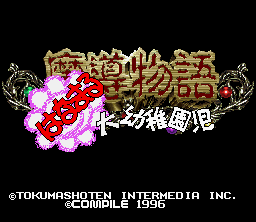
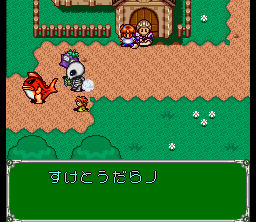
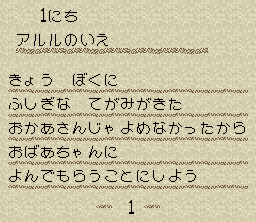
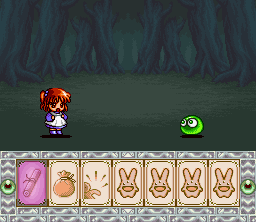
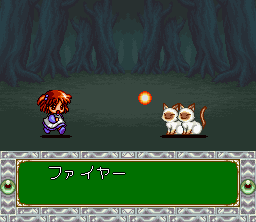
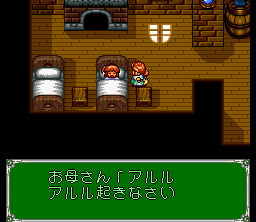



Reviews
There are no reviews yet.